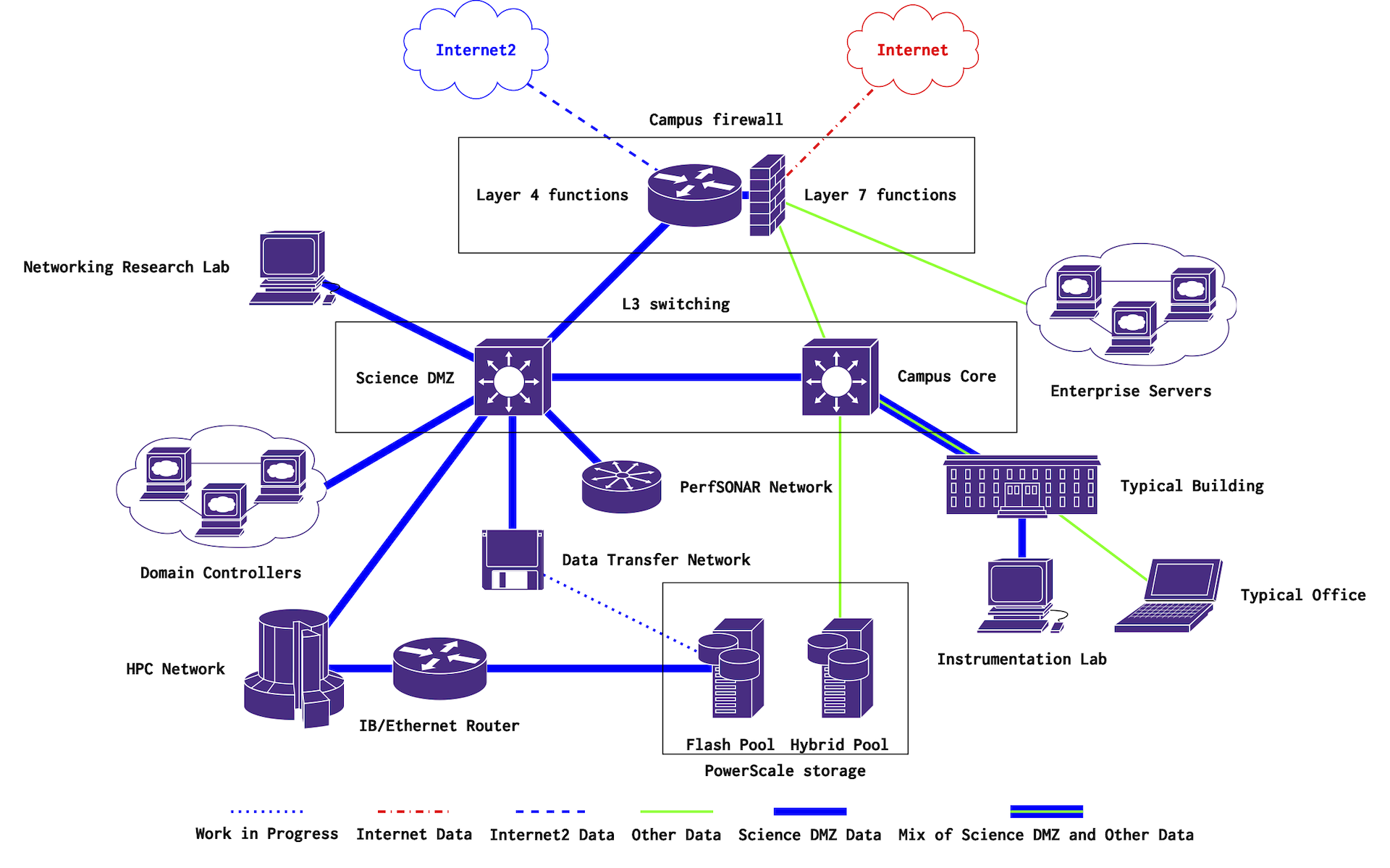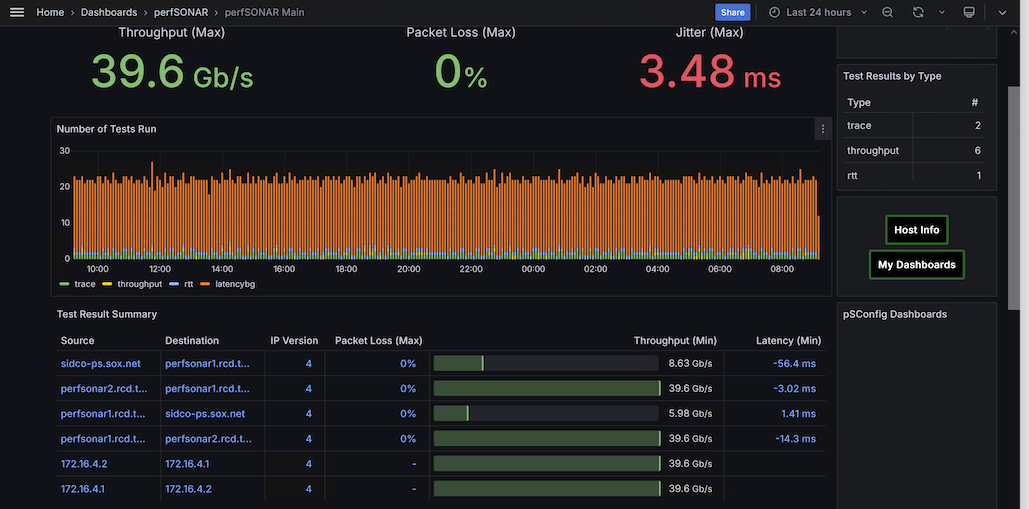High Speed Networking Services
Research Computing and Data staff work closely other divisions in Information Technology Services (especially Systems Support, Networking and Operations, and Information Security) to provide high speed, secure networking services for data-intensive activities.
Table of Contents
- The Research Network (also known as the Science DMZ)
- High Speed, Automated Data Transfer
- Network Performance Monitoring
The Research Network (also known as the Science DMZ)
[A] portion of the network, built at or near the campus or laboratory’s local network perimeter that is designed such that the equipment, configuration, and security policies are optimized for high-performance scientific applications rather than for general-purpose business systems or “enterprise” computing.
(from Energy Sciences Network’s Fasterdata Knowledge Base, Science DMZ)
Established through NSF Award #2018373 and managed by Information Technology Services, TN Tech’s research network (or Science DMZ) sits alongside the rest of the campus network, but is designed for data-intensive research applications. Networks on a university campus support multiple organizational missions, including:
- normal business and academic operations (email, financials, records), and
- research (often collaborative, international, and voluminous).
Building one network to handle both types of data can be difficult, expensive, or unoptimized, and separating research networks from administrative networks can help. Security policies inside the research network can be relaxed or restrictive on an as-needed basis, analogous to networks supporting:
- multi-institutional, collaborative, and open science;
- clinical research;
- controlled unclassified information; and
- cybersecurity research (especially live malware).
A high-level diagram of the campus networking structure is shown below.

The research network has a dedicated 10 gigabit per second connection to both research and education networks and the Internet in general via Southern Crossroads and Internet2. That connection goes through a high speed section of the campus perimeter firewall that does not require network traffic to go through rigorous inspection appropriate for the administrative side of the network. This network structure maintains a logical separation of high performance applications from the rest of campus, and achieves this with a combination of dedicated physical hardware in the campus data center and connections to other campus locations with similar needs. We’ve worked to integrate research and administrative applications onto shared infrastructure where appropriate, without compromising performance or security.
If you have questions about the research network, please use the Request Service button in our ticketing system.
High Speed, Automated Data Transfer
Research Computing and Data staff are responsible for servers designed for high speed data transfer, also known as data transfer nodes or DTNs. Each of our two DTNs include over 10 terabytes of flash storage and 40 gigabit per second network connectivity. These can be useful for quickly moving large amounts of data to and from remote sites. As of August 2025, we’re in the process of installing and configuring Globus Connect Server on the DTNs to enable moving data in a more automated, reliable manner.
To get access to a data transfer node, please use the Request Service button in our ticketing system.
Network Performance Monitoring
Research Computing and Data staff manage network monitoring tools to proactively identify performance problems, both inside and outside the research network. Metrics include bandwidth, latency, and jitter (consistency), and historical data is stored for later analysis and diagnostics.
